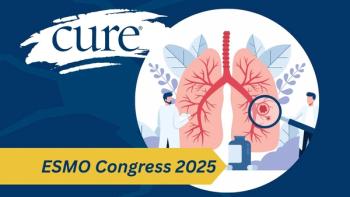
Patients With Aggressive Lymphomas Experience Major Quality of Life Improvements 1 Year After Diagnosis
Patients with aggressive lymphomas experienced sharp increases in quality of life from time of diagnosis until one year later and continued to see improvements for almost a decade.
Patients with aggressive lymphoma tended to have major improvements in quality of life (QOL) after one year, compared to baseline QOL at diagnosis. Then, QOL increases continued upward for years to come, according to study results presented at the ASH Annual Meeting and Exposition.
Using the Functional Assessment of Cancer Therapy-General (FACT-G) – which includes well-being, physical, functional, social/family, and emotional factors – researchers analyzed QOL in 2,018 patients with newly diagnosed aggressive lymphoma.
“The scale itself is a 27-item questionnaire measuring each of the four domains, which are compounded to create an overall quality of life score. A higher score indicates a better-rated quality of life,” said Dr. Robert M. Kraft, study author and internal medical resident at the Mayo Clinic, during a virtual presentation of the data.
The patients were followed up at one, two, three, six, and nine years after diagnosis.
On average, patients saw the sharpest increase in QOL one year after diagnosis. QOL then continued to improve for most patients up until the nine-year mark.
The researchers also compared each of the FACT-G domains between the group of patients with aggressive lymphomas to the general population in the United States. Emotional and functional, and physical wellbeing did not have statistically significant differences at baseline between the patient and general populations.
Social and family wellbeing, however, had a marked difference at baseline.
“The most striking sub-domain baseline finding was social/family wellbeing in patients with aggressive lymphoma,” Kraft said. “[It] was clinically significantly higher than the U.S. general population at baseline.”
Kraft also explained that social/family wellbeing scores saw a mild decrease from baseline until the nine-year mark, though it wasn’t a large enough decrease to be considered statistically significant.
“A lymphoma diagnosis is a life-changing diagnosis – any cancer diagnosis is – and there’s a sense of rallying behind the patient,” Kraft said. “We presume that is what was shown in the results. Then, in getting at that mild decline over time … treatment can change a patient’s outlook on things, and [cancer] can stress out family members as well.”
Ultimately, though, Kraft emphasized that despite the diagnosis, life does get better over time for patients with aggressive lymphomas.
“Compounding all the scores together, there was no clinically meaningful difference in quality-of-life scores at baseline in patients with aggressive lymphomas [compared] to the U.S. general population,” Kraft said. “However, in patients with aggressive lymphoma … total quality of life scores nine years after diagnosis were clinically significantly higher than the U.S. general population.”
For more news on cancer updates, research and education, don’t forget to





